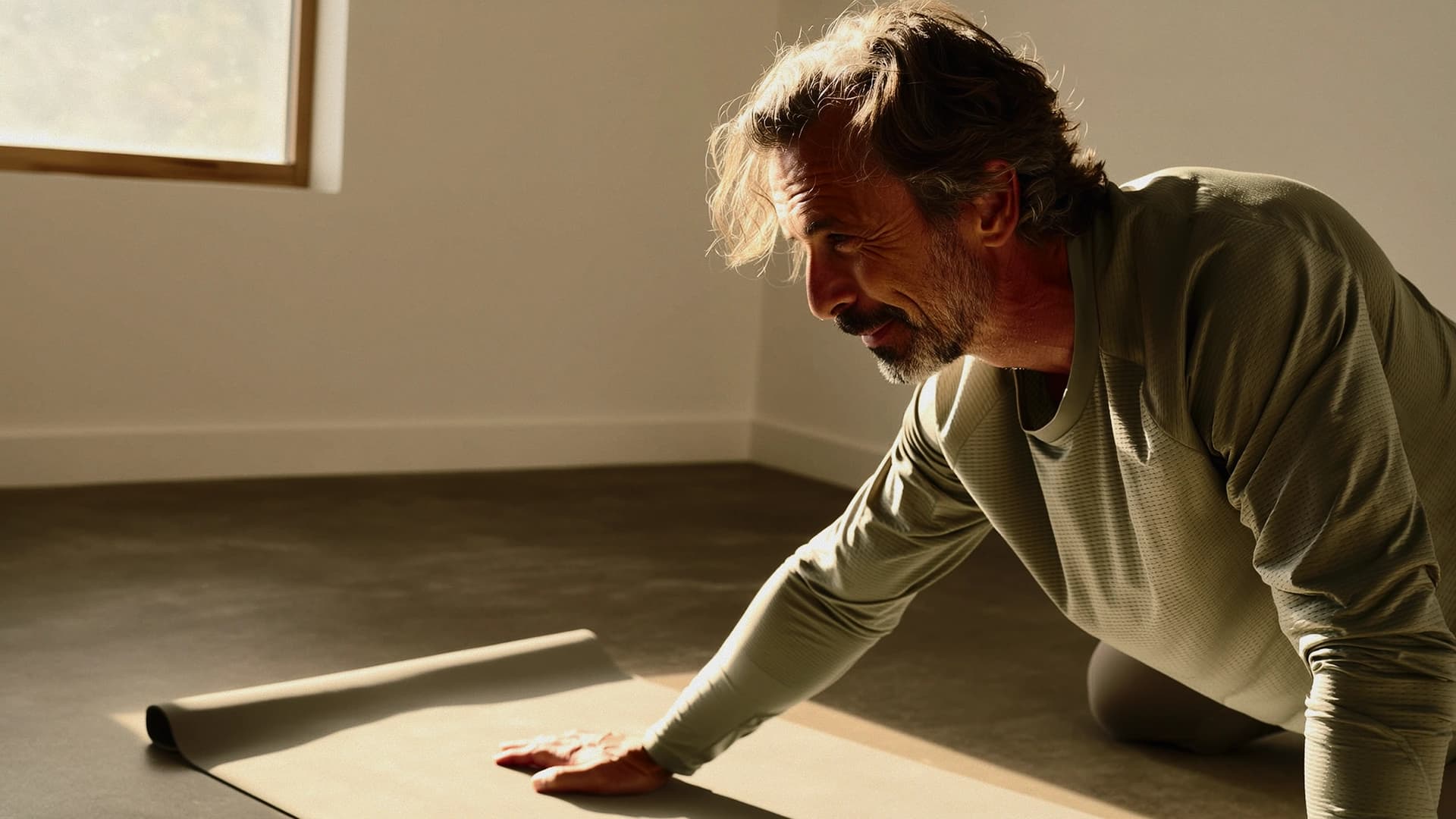Men's Health
October 22, 2025
Consistency Over Intensity: The Secret of Sustainable Midlife Fitness
When John turned 52, he decided he was “done feeling old.”
John’s story isn’t unique. Around midlife, many people do the same - chasing effort when what they really need is rhythm.
He bought new running shoes, a smartwatch, and downloaded three fitness apps. For two weeks, he was unstoppable - 5 a.m. alarms, cold showers, protein shakes, burpees. His wife, Melissa, watched from the kitchen, coffee in hand, half amused, half worried.
By the third week, the shoes were back in the closet. His knee hurt. His lower back ached. The smartwatch was still counting steps - but mostly from pacing around the office.
That’s the part no one talks about - that in your forties and fifties, it’s not motivation you lose first, it’s recovery.
And it’s not willpower you need most - it’s rhythm.
The Illusion of “All or Nothing”
For years, John had believed that the only real workout was an extreme one - the kind that leaves you drenched, sore, and triumphant. But after every intense push came a crash: fatigue, guilt, a feeling of failure.
Melissa once told him, “You don’t need to prove you can do more. You just need to do enough - again tomorrow.”
That’s when something shifted.
He stopped chasing exhaustion and started chasing consistency. He swapped hour-long sessions for short, guided micro-routines. Instead of trying to “crush” a workout, he focused on building strength he could sustain.
It wasn’t glamorous, but it worked.
Why Consistency Beats Intensity After 45
Science backs what John - and millions like him - eventually learn the hard way: after 45, the body changes how it builds muscle, burns fat, and repairs itself [1]. High-intensity workouts can be more harmful than helpful if your recovery window is shorter or hormones are shifting.
What works best now is movement that respects biology:
-
Strength training that’s steady, not punishing.
-
Cardio and fat-burn sessions that lift your heart rate without draining your energy.
-
Mobility and flexibility routines that keep your joints pain-free.
That’s the foundation of midlife fitness - the kind that gives back more than it takes.
Because the real measure of success at this stage isn’t how much you can lift - it’s whether you can do it again tomorrow.
The Power of Showing Up
John’s story isn’t really about exercise. It’s about ego - and how freeing it feels to let go of it.
He no longer trains to prove he’s young. He trains to stay connected to his body, to his partner, to the life he’s still shaping. He trains to make his years count.
He and Melissa now do Younger workouts together - short 20-minute sessions, sometimes strength, sometimes balance or mobility.
They don’t compete. They laugh when one of them loses balance. They cheer when they finish.
The results? Less pain, more energy, better moods, better sleep.
That’s what sustainable midlife fitness looks like. Not perfect effort - but repeated care.
The Real Secret: Routine That Feels Like Life
The truth is, you don’t need a revolution. You need a rhythm.
It’s not the push-ups that change you - it’s showing up again on Wednesday. It’s choosing a 15-minute stretch instead of nothing. It’s realizing that rest is part of progress, not proof of weakness.
That’s why the Younger App is built around one core philosophy: Consistency over intensity.
Guided routines for men and women 45+, of every fitness level - from gentle balance sessions to full-body cardio or strength work, done at home, in the gym, or anywhere life fits it in.
Because consistency isn’t about discipline - it’s about kindness.
It’s the quiet decision to keep showing up for yourself.
Melissa says John’s favorite moment now isn’t the last rep. It’s the first deep breath when he starts.
Because that’s the moment he feels alive - not younger in years, but stronger in spirit.
And that’s what this is all about.
References
[1] Journal of Strength and Conditioning Research – “Exercise adaptation and recovery in adults 45–65.”
Disclaimer
This article is for informational purposes only and does not constitute medical advice.
Please consult a healthcare provider before beginning any new exercise or lifestyle routine.
Full disclaimer available in the footer of the Younger website.

